Hyundai i30 vs Renault Clio – Performance, range & efficiency compared
Two cars, one duel: Hyundai i30 meets Renault Clio.
Which one wins in performance, efficiency and value for money? Find out now!
Costs and Efficiency:
Price and efficiency are often the first things buyers look at. Here it becomes clear which model has the long-term edge – whether at the pump, the plug, or in purchase price.
Renault Clio has a clearly advantage in terms of price – it starts at 16600 £, while the Hyundai i30 costs 24000 £. That’s a price difference of around 7406 £.
Fuel consumption also shows a difference: Renault Clio manages with 4.10 L and is therefore distinct more efficient than the Hyundai i30 with 5.70 L. The difference is about 1.60 L per 100 km.
Engine and Performance:
Under the bonnet, it becomes clear which model is tuned for sportiness and which one takes the lead when you hit the accelerator.
When it comes to engine power, the Renault Clio has a slightly edge – offering 158 HP compared to 140 HP. That’s roughly 18 HP more horsepower.
In acceleration from 0 to 100 km/h, the Renault Clio is somewhat quicker – completing the sprint in 8.30 s, while the Hyundai i30 takes 9.60 s. That’s about 1.30 s faster.
In terms of top speed, the Hyundai i30 performs barely noticeable better – reaching 197 km/h, while the Renault Clio tops out at 180 km/h. The difference is around 17 km/h.
There’s also a difference in torque: Hyundai i30 pulls to a small extent stronger with 253 Nm compared to 205 Nm. That’s about 48 Nm difference.
Space and Everyday Use:
Cabin size, boot volume and payload all play a role in everyday practicality. Here, comfort and flexibility make the difference.
Both vehicles offer seating for 5 people.
In curb weight, Renault Clio is a bit lighter – 1124 kg compared to 1291 kg. The difference is around 167 kg.
In terms of boot space, the Hyundai i30 offers hardly perceptible more room – 395 L compared to 391 L. That’s a difference of about 4 L.
In maximum load capacity, the Hyundai i30 performs minimal better – up to 1301 L, which is about 125 L more than the Renault Clio.
When it comes to payload, Hyundai i30 hardly perceptible takes the win – 509 kg compared to 463 kg. That’s a difference of about 46 kg.
Who comes out on top?
Overall, the Renault Clio shows itself to be dominates this comparison and secures the title of DriveDuel Champion.
It convinces with the more balanced overall package and proves to be the more versatile choice for everyday use.
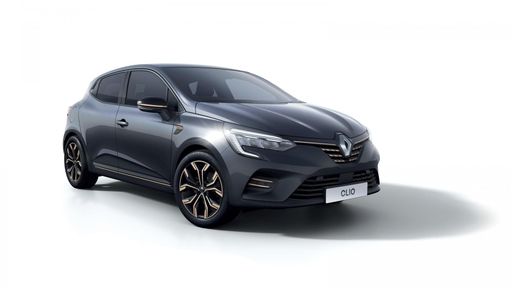 @ Renault Group Media
@ Renault Group Media
Renault Clio
Hyundai i30
The Hyundai i30 proves that sensible can also be stylish, offering a confident driving character wrapped in neat, modern design. It serves up a roomy, well-equipped cabin and composed ride that make everyday motoring feel like a clever purchase rather than a compromise.
details @ Hyundai Motor Company
@ Hyundai Motor Company
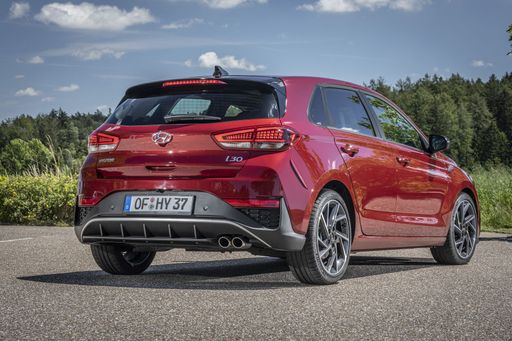 @ Hyundai Motor Company
@ Hyundai Motor Company
 @ Hyundai Motor Company
@ Hyundai Motor Company
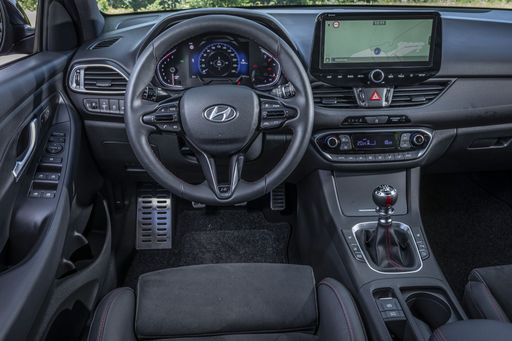 @ Hyundai Motor Company
@ Hyundai Motor Company
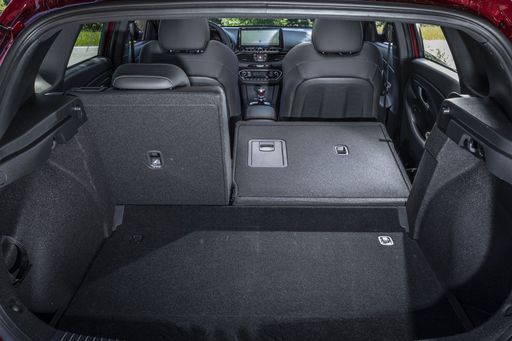 @ Hyundai Motor Company
@ Hyundai Motor Company
Renault Clio
The Clio punches above its weight with chic French styling and a surprisingly grown-up cabin that makes city driving feel effortlessly stylish. It's an easy-to-live-with choice that keeps ownership simple and even manages to put a grin on your face when the traffic gets dull.
details @ Renault Group Media
@ Renault Group Media
 @ Renault Group Media
@ Renault Group Media
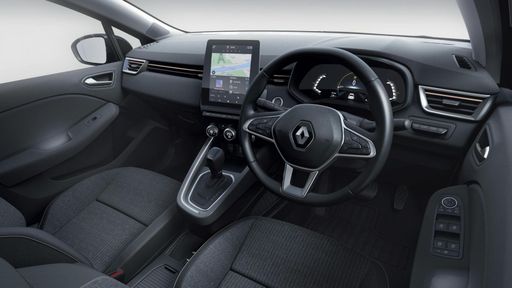 @ Renault Group Media
@ Renault Group Media
 @ Hyundai Motor Company
@ Hyundai Motor Company
|
 @ Renault Group Media
@ Renault Group Media
|
|
|
|
Costs and Consumption |
|
|---|---|
|
Price
24000 - 29300 £
|
Price
16600 - 23700 £
|
|
Consumption L/100km
5.7 - 6 L
|
Consumption L/100km
4.1 - 5.3 L
|
|
Consumption kWh/100km
-
|
Consumption kWh/100km
-
|
|
Electric Range
-
|
Electric Range
-
|
|
Battery Capacity
-
|
Battery Capacity
0.60 kWh
|
|
co2
130 - 136 g/km
|
co2
92 - 121 g/km
|
|
Fuel tank capacity
50 L
|
Fuel tank capacity
39 - 42 L
|
Dimensions and Body |
|
|---|---|
|
Body Type
Hatchback
|
Body Type
Hatchback
|
|
Seats
5
|
Seats
5
|
|
Doors
5
|
Doors
5
|
|
Curb weight
1291 - 1407 kg
|
Curb weight
1124 - 1331 kg
|
|
Trunk capacity
395 L
|
Trunk capacity
301 - 391 L
|
|
Length
4340 mm
|
Length
4053 - 4116 mm
|
|
Width
1795 mm
|
Width
1768 - 1798 mm
|
|
Height
1455 mm
|
Height
1440 - 1451 mm
|
|
Max trunk capacity
1301 L
|
Max trunk capacity
979 - 1176 L
|
|
Payload
463 - 509 kg
|
Payload
398 - 463 kg
|
Engine and Performance |
|
|---|---|
|
Engine Type
Petrol, Petrol MHEV
|
Engine Type
Full Hybrid, Petrol
|
|
Transmission
Manuel, Automatic
|
Transmission
Automatic, Manuel
|
|
Transmission Detail
Manual Gearbox, Dual-Clutch Automatic
|
Transmission Detail
Automatic Gearbox, Manual Gearbox, Dual-Clutch Automatic
|
|
Drive Type
Front-Wheel Drive
|
Drive Type
Front-Wheel Drive
|
|
Power HP
100 - 140 HP
|
Power HP
67 - 158 HP
|
|
Acceleration 0-100km/h
9.6 - 13.1 s
|
Acceleration 0-100km/h
8.3 - 17.1 s
|
|
Max Speed
178 - 197 km/h
|
Max Speed
160 - 180 km/h
|
|
Torque
172 - 253 Nm
|
Torque
95 - 205 Nm
|
|
Number of Cylinders
3 - 4
|
Number of Cylinders
3 - 4
|
|
Power kW
74 - 103 kW
|
Power kW
49 - 116 kW
|
|
Engine capacity
998 - 1482 cm3
|
Engine capacity
999 - 1789 cm3
|
General |
|
|---|---|
|
Model Year
2024
|
Model Year
2023 - 2026
|
|
CO2 Efficiency Class
D, E
|
CO2 Efficiency Class
C, D, B
|
|
Brand
Hyundai
|
Brand
Renault
|
What drive types are available for the Hyundai i30?
Available configurations include Front-Wheel Drive.
The prices and data displayed are estimates based on German list prices and may vary by country. This information is not legally binding.
